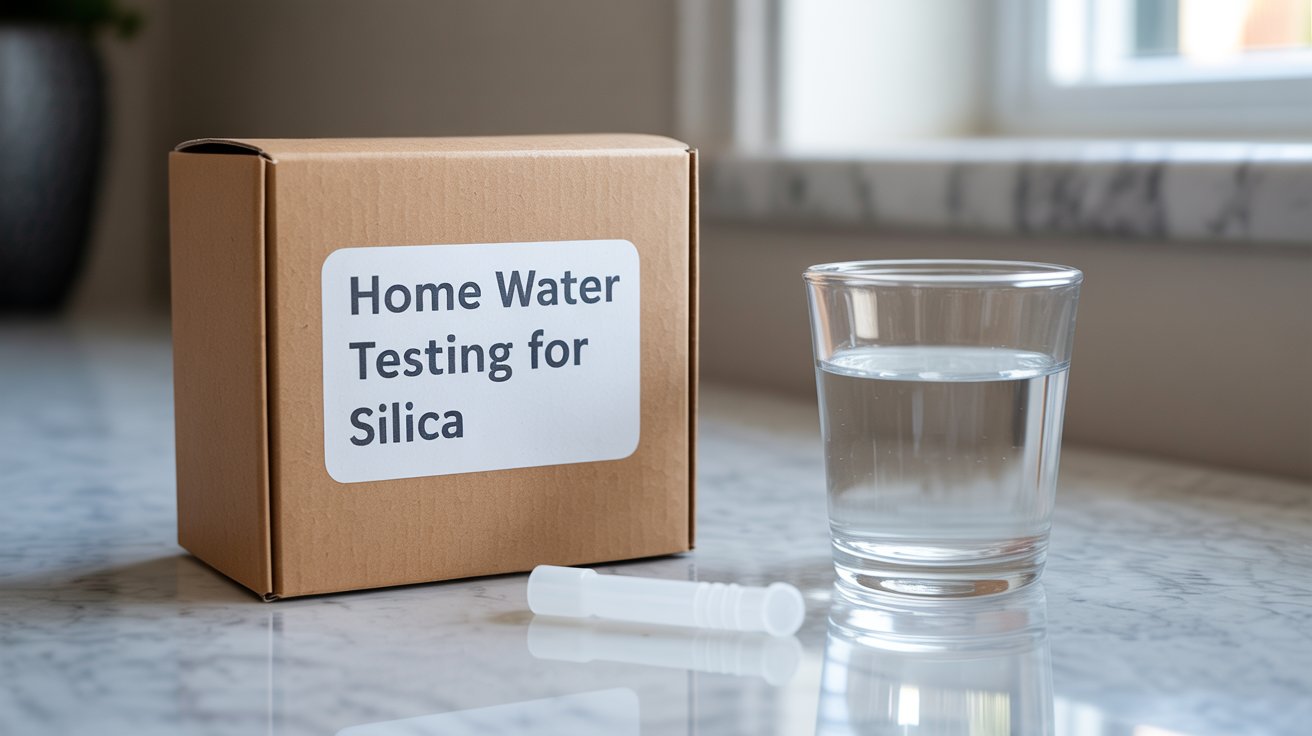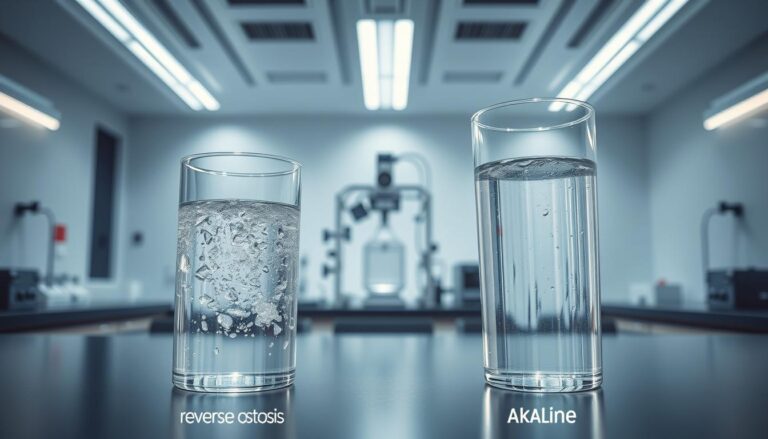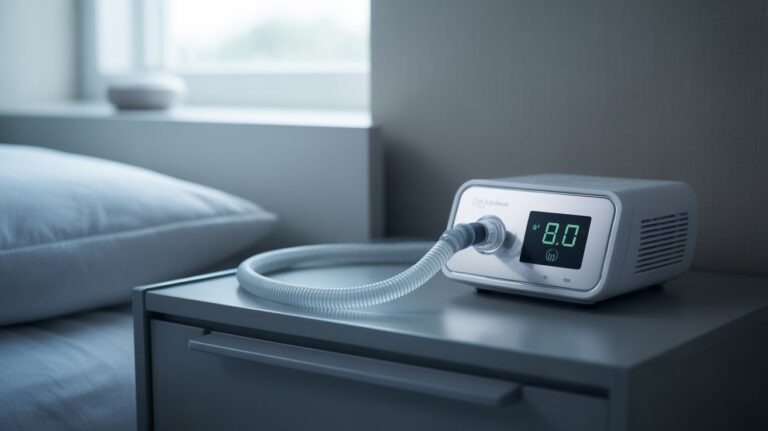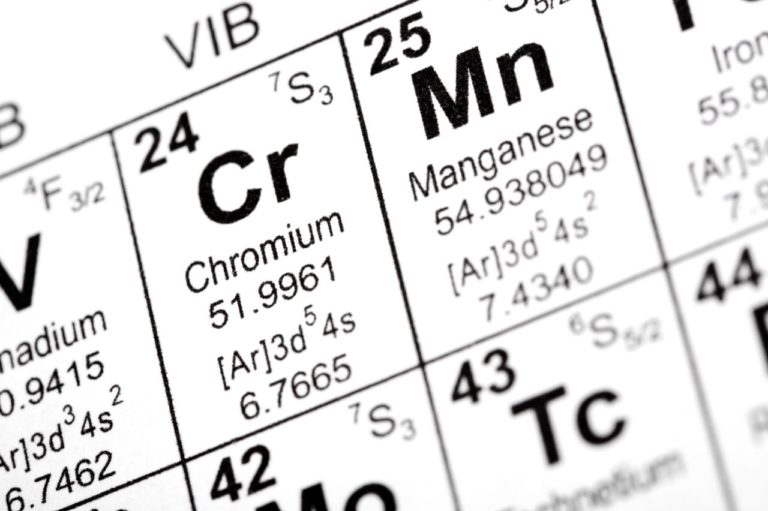Everything You Need to Know About Silica in Your Water
Have you ever wondered what’s really in your drinking water? Beyond the obvious contaminants, there’s a naturally occurring mineral that could be affecting your health: silica.
Silica, a compound with the formula SiO2, is one of the most common minerals on Earth, found in various forms, most notably as quartz. When it comes to drinking water, understanding silica in water is crucial.
The presence of silica in drinking water can have significant effects, ranging from scaling in pipes to potential health impacts. As we explore the world of silica water effects, it becomes clear that knowing more about this mineral is essential for making informed decisions about your water consumption.
Key Takeaways
- Silica is a naturally occurring mineral compound found in water.
- Understanding silica’s forms and effects is crucial for health and plumbing.
- Silica in drinking water can lead to scaling and potential health issues.
- Knowing the silica content in your water can inform your consumption choices.
- The impact of silica on health and infrastructure is multifaceted.
What Is Silica and Why Is It in Your Water?
Understanding silica in water requires a look into its chemistry, sources, and the different forms it can take. Silica, or silicon dioxide, is one of the most common compounds found in nature, and its presence in water is influenced by both geological processes and human activities.
The Chemistry and Forms of Silica
Silica in water exists in various forms, primarily as dissolved silica and colloidal silica. Dissolved silica is present in the form of silicic acid, which is a weak acid that doesn’t significantly affect the water’s pH. “Reactive silica” is a term used to describe the dissolved form of silica that can react with certain chemicals.
Colloidal silica, on the other hand, consists of tiny particles that are suspended in water. These particles are so fine that they can’t be removed through conventional filtration methods, making colloidal silica a challenging form to manage in water treatment processes.
Natural vs. Industrial Sources
Silica in water originates from both natural and industrial sources. Naturally, silica is introduced into water through the weathering of rocks and minerals. Industrial activities, such as mining and construction, can also release significant amounts of silica into water bodies.
According to David Brewster, silica can exist in water supplies in two main forms: “Reactive Silica” and “Colloidal Silica.” Understanding these sources is crucial for managing silica levels in water supplies.
Dissolved vs. Colloidal Silica
The distinction between dissolved and colloidal silica is critical for water treatment. Dissolved silica is typically more reactive and can be managed through chemical treatment methods. In contrast, colloidal silica requires more sophisticated removal techniques, such as coagulation and filtration.
As silica continues to be a significant component of water supplies, understanding its forms and sources is essential for addressing potential silica water effects and mitigating silica health risks. Effective management of silica in water is crucial for both public health and the longevity of household plumbing systems.
Common Sources of Silica in Water Supplies
Understanding the sources of silica in water is crucial for assessing its impact on health and household systems. Silica, or silicon dioxide, is a naturally occurring compound that can be found in various forms in water supplies.
Geological Origins and Weathering
Silica in water often originates from geological formations. As water flows through rocks and soil, it can dissolve silica, carrying it into groundwater and surface water bodies. The process of weathering significantly contributes to silica levels, as it breaks down silicate minerals into soluble forms that can be carried by water.
Industrial Contributions and Contamination
Besides natural sources, industrial activities can also contribute to silica levels in water. Industrial processes, such as mining and construction, can release silica into the environment, potentially contaminating nearby water sources. Effective management of these activities is crucial to minimize their impact on water quality.
Municipal Water vs. Well Water Sources
The source of drinking water—whether municipal or well water—can significantly influence silica levels in drinking water. Municipal water supplies often undergo treatment processes that may affect silica concentrations. In contrast, well water, being directly drawn from groundwater, can have varying silica levels depending on the local geology. Understanding these differences is key to managing silica exposure and considering appropriate silica water treatment options.
Everything You Need To Know About Silica In Your Water: Health Implications
Silica, a common component of drinking water, has both potential health benefits and risks associated with its consumption. As we explore the health implications of silica in drinking water, it’s essential to consider its various forms and how they interact with the human body.
Potential Health Benefits of Silica
Research has suggested that silica may have several health benefits, including supporting bone health and potentially reducing the risk of osteoporosis. Silica is believed to play a role in the absorption of minerals such as calcium and magnesium, which are crucial for bone density.
Additionally, silica is thought to contribute to the health of skin, hair, and nails. Some studies indicate that silica supplementation can improve skin elasticity and reduce the appearance of fine lines and wrinkles.
Possible Health Concerns and Risks
While silica is generally considered safe for consumption, there are potential health concerns associated with its presence in drinking water. High levels of silica can lead to the formation of kidney stones in susceptible individuals.
Moreover, the ingestion of silica through drinking water is not typically considered a risk factor for silicosis, a condition caused by inhaling silica particles. However, it’s crucial to differentiate between ingested silica and inhaled silica dust, as the health implications are distinct.
Silica and Specific Health Conditions
The relationship between silica in drinking water and specific health conditions is an area of ongoing research. Some studies have explored the potential links between silica exposure and conditions such as Alzheimer’s disease, although more research is needed to establish any definitive connections.
For individuals with certain health conditions, such as kidney disease, the impact of silica in drinking water may be a concern. It’s advisable for those with specific health concerns to consult with healthcare professionals regarding their individual situation.
How to Test for Silica in Your Water
Understanding the silica levels in your drinking water is essential for your health and household. Testing for silica can seem daunting, but it’s a straightforward process once you know your options.
There are several methods to test for silica in water, ranging from DIY kits to professional analysis services. The choice between these methods depends on your specific needs, including the desired level of accuracy and the frequency of testing.
DIY Testing Kits and Methods
DIY testing kits are a convenient and cost-effective way to get an initial reading of silica levels in your water. These kits usually involve a simple colorimetric test that changes color based on the silica concentration. While not as precise as professional tests, DIY kits can provide a useful preliminary assessment.
Professional Water Analysis Services
For a more accurate measurement, consider hiring a professional water analysis service. These services use advanced equipment and techniques, such as inductively coupled plasma mass spectrometry (ICP-MS), to provide a detailed analysis of your water’s silica content and other parameters.
Interpreting Test Results
Once you’ve conducted a test, interpreting the results is crucial. Silica levels are typically measured in milligrams per liter (mg/L) or parts per million (ppm). Understanding what these levels mean in terms of health and household implications is key to making informed decisions about your water.
Frequency of Testing Recommendations
How often you should test your water for silica depends on several factors, including your water source and any changes in your water’s taste, odor, or appearance. As a general rule, testing every 6 to 12 months is recommended, especially if you’re concerned about silica levels or have noticed issues with scaling or appliance performance.
By testing your water for silica and understanding the results, you can take appropriate steps to manage its quality, whether that involves using silica filtration systems or other treatment methods.
Safe Levels of Silica in Drinking Water
Ensuring the silica levels in your drinking water are within safe limits is vital for overall well-being. Silica, or silicon dioxide, is a naturally occurring compound found in water sources. While it’s known for its potential health benefits, excessive levels can pose health risks and affect household plumbing.
EPA Guidelines and Regulations
The Environmental Protection Agency (EPA) sets guidelines for various contaminants in drinking water, including silica. According to the EPA, there are currently no enforceable standards for silica under the Safe Drinking Water Act. However, the EPA has established a maximum contaminant level goal (MCLG) for silica, recommending that levels do not exceed 50 mg/L for total silica to avoid potential health risks.
International Standards and Comparisons
Internationally, the standards for silica in drinking water vary. The World Health Organization (WHO) has not established a health-based guideline value for silica. However, some countries have set their own standards. For instance, in some European countries, the maximum allowable limit for silica is similar to the EPA’s recommendation. A comparison of international standards is presented in the table below.
| Country/Organization | Maximum Allowable Silica Level (mg/L) | Guideline Basis |
|---|---|---|
| United States (EPA) | 50 | MCLG |
| WHO | No guideline value | N/A |
| European Union | Variable by country, typically around 50 | National standards |
When to Be Concerned About Your Silica Levels
While silica is generally not considered a health risk at typical exposure levels, there are situations where concern is warranted. If your water source is known to have high silica levels, or if you notice symptoms that could be related to silica exposure, such as kidney stone issues or scaling in pipes and appliances, it’s advisable to test your water. Additionally, if you’re using well water or live in an area known for high silica geological formations, regular testing is prudent.
Being informed about the silica levels in your drinking water and understanding the guidelines can help you make informed decisions about your health and household maintenance. Regular testing and awareness of the sources of your water can mitigate potential risks associated with silica.
Effects of Silica on Plumbing and Appliances
Understanding the impact of silica on household appliances and plumbing is crucial for homeowners. Silica in water can lead to various issues, affecting both the longevity and efficiency of plumbing systems and appliances.
Scale Formation and Mineral Buildup
Silica deposits can cause significant scale formation and mineral buildup on surfaces and appliances. According to David Brewster, “Silica deposits can cause significant problems, including scale formation and mineral buildup on surfaces and appliances.” This buildup can reduce the efficiency of appliances and increase energy consumption.
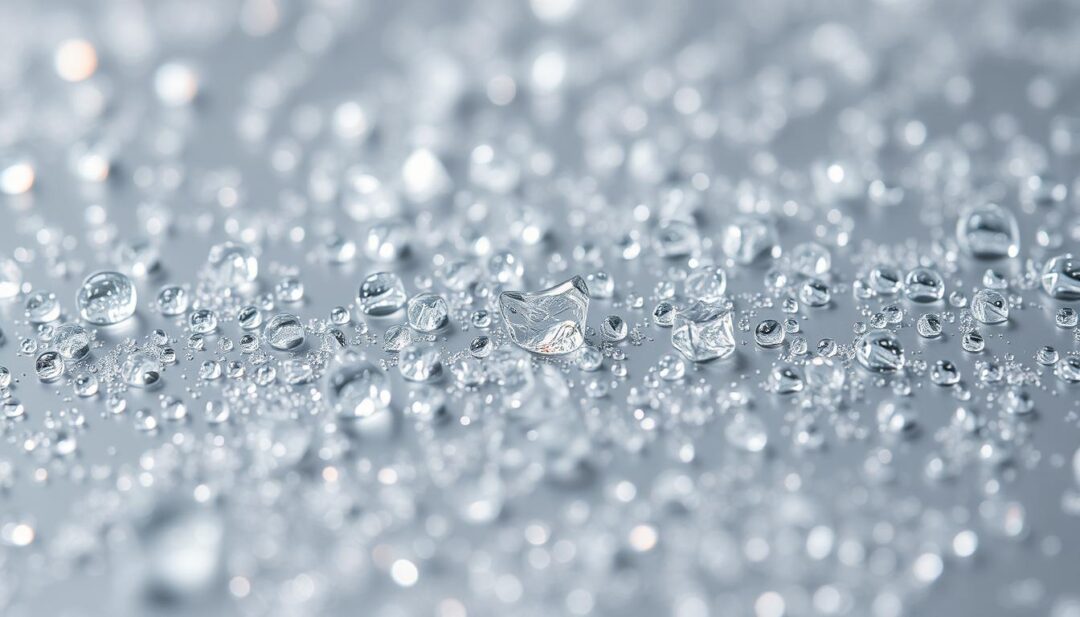
Impact on Water Heaters and Fixtures
Water heaters and fixtures are particularly vulnerable to silica-induced damage. The mineral buildup can lead to reduced water flow, increased energy bills, and potentially catastrophic failures of these systems.
Long-term Effects on Household Plumbing Systems
Over time, silica can cause significant damage to household plumbing systems. The scale and mineral deposits can narrow pipes, reduce water pressure, and lead to costly repairs if not addressed.
Signs of Silica Damage to Watch For
Homeowners should be aware of the signs of silica damage, including:
- Reduced water pressure
- Increased energy bills
- Visible scale or mineral deposits on appliances and fixtures
- Premature failure of plumbing components
By understanding these effects and taking proactive measures, homeowners can mitigate the risks associated with silica in water and protect their plumbing and appliances.
Silica Removal: Treatment Options for Your Home
For homeowners dealing with silica-rich water, understanding the available treatment options is essential. Silica, or silicon dioxide, can cause scaling in pipes and appliances, and its removal is crucial for maintaining household plumbing and ensuring water quality.
Filtration Systems
Filtration systems are a common method for removing silica from drinking water. These systems vary in their effectiveness and maintenance requirements.
Reverse Osmosis Systems
Reverse osmosis (RO) systems are highly effective in removing silica, along with other contaminants. They work by forcing water through a semi-permeable membrane, which filters out impurities. RO systems are particularly useful for households with high silica levels.
Ion Exchange Systems
Ion exchange systems can also be used to remove silica, although they are more commonly associated with softening water by removing calcium and magnesium ions. Some ion exchange systems are specifically designed to target silica.
Specialty Silica Filters
There are filters designed specifically for silica removal, often using media that attract and trap silica particles. These can be an effective solution for households with significant silica issues.
Chemical Treatment Methods
Chemical treatment involves adding substances to the water that cause silica to precipitate out, making it easier to remove. This method can be effective but requires careful handling and dosing of the chemicals.
Cost Comparison and Effectiveness of Treatment Options
When choosing a silica removal method, both the initial cost and ongoing maintenance expenses must be considered. Reverse osmosis systems and ion exchange systems have different cost profiles and effectiveness levels. Specialty silica filters offer a targeted solution but may need to be replaced frequently. A detailed comparison of these options is necessary to determine the most cost-effective and efficient solution for a particular household.
The choice of silica removal method depends on several factors, including the level of silica in the water, household size, and budget. Consulting with a water treatment professional can help homeowners make an informed decision.
Regional Variations: Silica Levels Across the United States
Geological differences play a crucial role in determining silica levels in water supplies across various U.S. regions. The United States is a vast and geologically diverse country, with different regions having unique characteristics that influence the concentration of silica in drinking water.

High-Silica Regions and Water Sources
Some regions in the United States are known to have higher levels of silica in their water sources. These include areas with significant geological activity or where the soil and rocks are rich in silicate minerals. For instance, regions near volcanic areas or where there has been historical tectonic activity tend to have higher silica concentrations.
- Areas with high levels of silicate minerals in the soil and rocks.
- Regions near volcanic or tectonically active areas.
- Places with significant groundwater flow through silica-rich geological formations.
Low-Silica Regions and Water Sources
Conversely, some regions have lower silica levels due to different geological conditions. Areas with limestone or other carbonate-dominated geology tend to have lower silica levels because the water chemistry is less conducive to dissolving silica.
Key characteristics of low-silica regions include:
- Prevalent limestone or carbonate geology.
- Lower levels of silicate minerals in the soil and rocks.
- Different hydrological conditions that reduce silica dissolution.
Seasonal Variations in Silica Levels
Silica levels in water sources can also vary seasonally due to changes in precipitation, groundwater recharge, and other hydrological factors. Understanding these variations is crucial for managing water quality effectively.
For example, during periods of heavy rainfall, the silica levels might increase due to increased runoff and groundwater recharge, which can leach more silica from the soil and rocks.
Conclusion
Understanding silica in drinking water is crucial for maintaining good health and preventing damage to household plumbing and appliances. As discussed, silica is present in various forms and can have both beneficial and detrimental effects on health and household systems.
Silica in water can originate from natural geological sources or industrial activities, and its levels can vary significantly across different regions. Being aware of the silica levels in your drinking water is essential to mitigate potential health risks and damage to plumbing and appliances.
By testing your water and understanding the results, you can make informed decisions about treatment options, such as filtration systems or chemical treatment methods, to manage silica levels effectively. This proactive approach can help ensure the quality of your drinking water and protect your home’s infrastructure.
Everything you need to know about silica in your water involves recognizing its sources, understanding its effects on health and household systems, and taking appropriate measures to manage its levels. By doing so, you can enjoy safe and healthy drinking water while maintaining the integrity of your plumbing and appliances, thus avoiding unwanted silica water effects.

